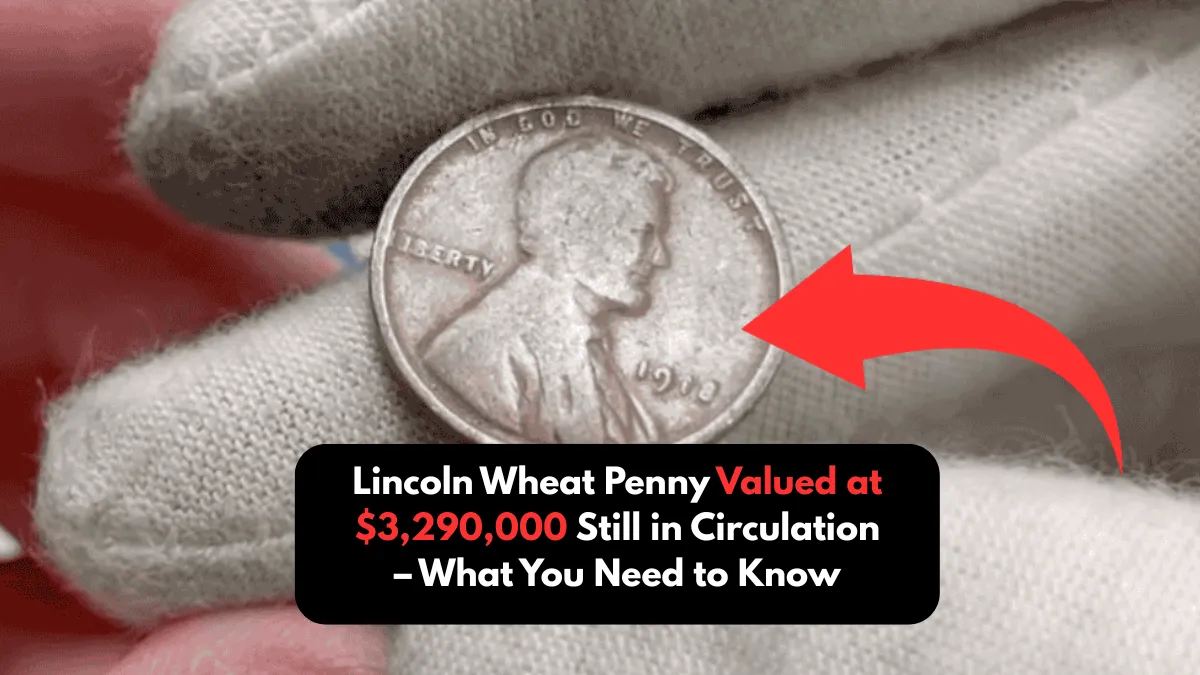Most People Think of Pennies as Pocket Change Many people overlook pennies, treating them as spare change often tossed into jars or dropped without care. But what if that small coin was actually worth millions? In one astonishing case, a rare Lincoln Wheat Penny fetched a staggering $3.29 million at auction.
Believe it or not, other similar rare coins may still be out there, waiting to be found by a lucky collector or a curious person checking their change.
What Makes the Lincoln Wheat Penny So Special?
The Lincoln Wheat Penny made its debut in 1909 as a tribute to President Abraham Lincoln on the 100th anniversary of his birth. This coin was groundbreaking as it was the first U.S. currency to display a real historical figure. The distinctive wheat stalks on the reverse side remained part of the design until 1958.
While most Lincoln Wheat Pennies are easy to find and not very valuable, certain rare ones stand out because of limited minting or unusual errors, which significantly increase their value among collectors.
Why One Penny Sold for $3.29 Million
During World War II, the U.S. Mint changed the penny’s composition in 1943 from copper to steel in order to conserve copper for military needs. However, a few copper coin blanks—known as planchets—were mistakenly used during production.
This led to the creation of extremely rare 1943 copper pennies. One of these rare copper Wheat Pennies, preserved in almost flawless condition, sold privately for $3.29 million. It is believed that only between 20 and 40 of these rare coins were ever made, making them a top prize for coin enthusiasts and investors alike.
How to Tell If You Have a Valuable Penny
There are a few key things to check if you want to see whether your penny might be worth a fortune. First, examine the date—does it say 1943? Then, look closely at the coin’s color. Most 1943 pennies are steel and appear silver. If yours has a copper or brown tone, it could be rare.
Try using a magnet to test the metal; steel will stick to a magnet, but copper will not. If your 1943 penny doesn’t stick, you might have something special. Also, keep an eye out for other rare dates, such as the 1909-S VDB, the 1914-D, or the 1955 Doubled Die—all of which are valuable to collectors.
Where Could You Find One?
Rare Lincoln Wheat Pennies can sometimes appear in the most unexpected places. You might come across one while digging through old coin jars, children’s piggy banks, or even while shopping at flea markets and estate sales. Inherited collections are another possible treasure trove, as older generations may have held on to coins without knowing their worth. Some hobbyists dedicate time to searching through rolls of pennies from banks, hoping to uncover one of these elusive and valuable coins hidden among the ordinary ones.
What to Do If You Find One
If you believe you’ve stumbled upon a rare and valuable penny, there are a few important steps to take. First, never clean the coin, as this can reduce its value significantly. Always handle it carefully, preferably by the edges or while wearing gloves.
To preserve its condition, store it in a coin holder or protective case. Next, consider having the coin evaluated by a reputable grading service such as the Professional Coin Grading Service (PCGS) or the Numismatic Guaranty Company (NGC). When it comes time to sell, work only with trustworthy coin dealers or established auction houses to get the best return.
Final Thoughts
The idea of a penny being worth $3.29 million might sound like a fairy tale, but it’s a documented reality. With some basic knowledge and a little bit of luck, you might uncover a rare coin that turns out to be extremely valuable. It could be hiding in plain sight—among the loose change in your home or tucked away in an old coin collection. So don’t ignore those pennies; take a closer look. You never know when you might discover a small fortune lying right at your fingertips.
John M. Moody is a passionate writer known for his insightful and engaging storytelling. With a background in astrology and a love for exploring the human experience, John weaves cosmic wisdom into compelling narratives that inspire and enlighten. His work spans articles, essays, and spiritual guides, often blending mystical themes with real-life reflections. When he's not writing, John enjoys stargazing, reading mythology, and connecting with nature for creative inspiration.
